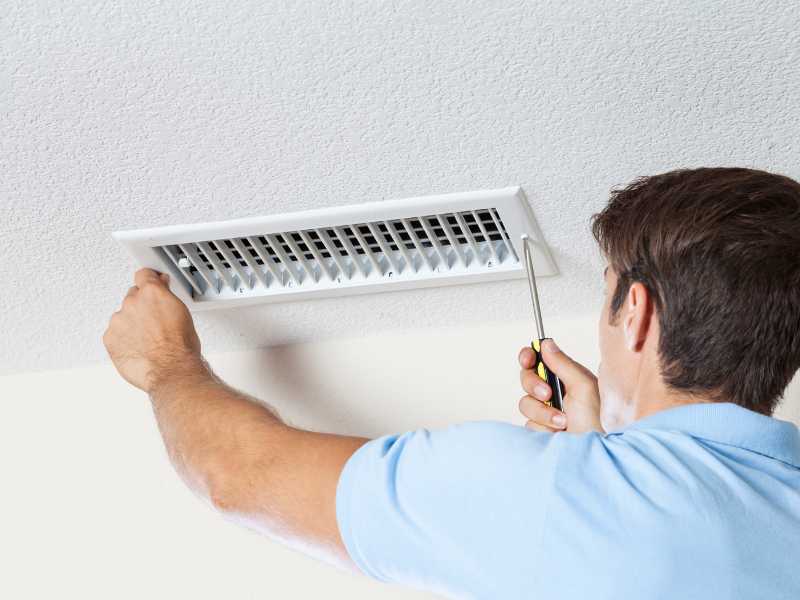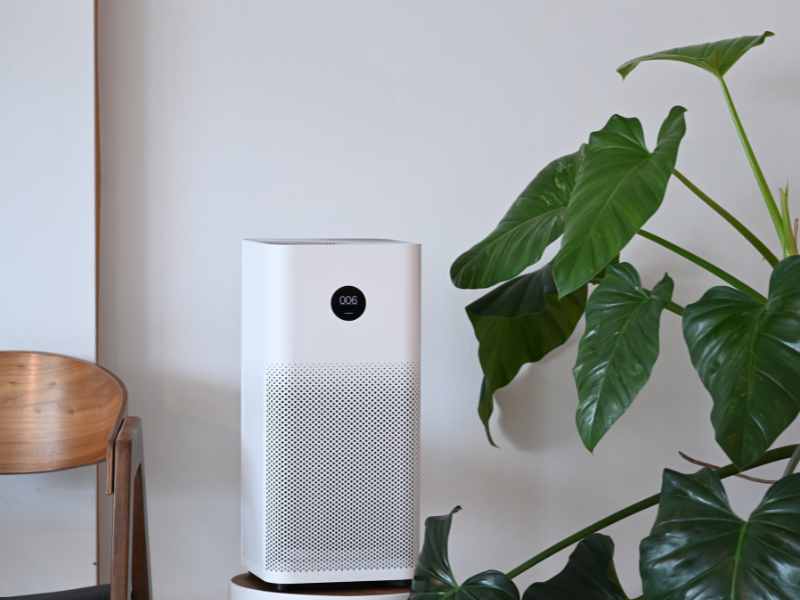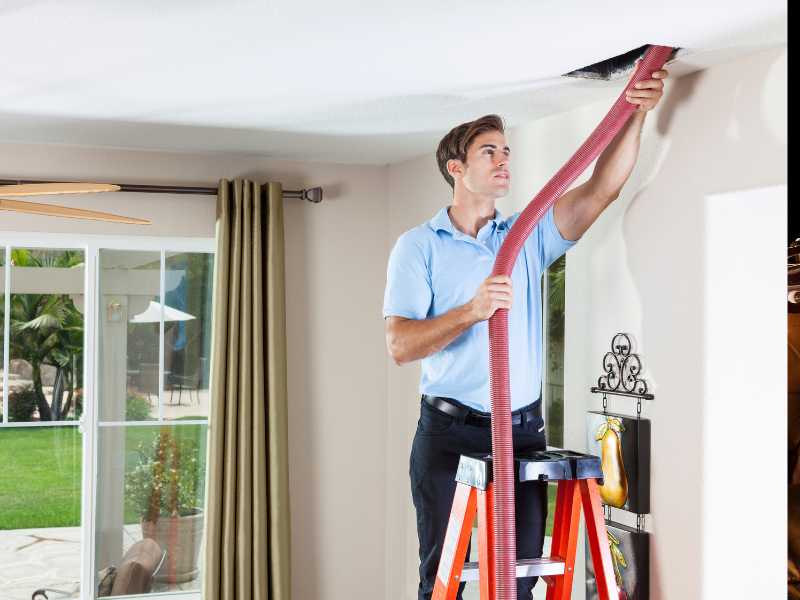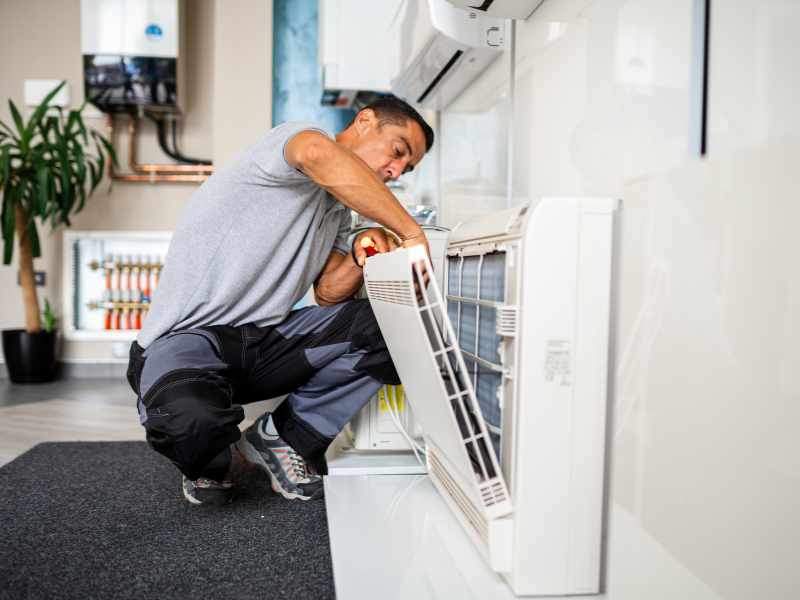Air Cleaning: Everything You Need to Know

Air cleaning, often overshadowed by more prominent topics in the HVAC world, holds its unique place with unmatched efficacy and necessity in enhancing indoor air quality. This unsung hero of home and office environments quietly plays a pivotal role in removing airborne contaminants, offering a cleaner, healthier living space. Its significance shines in the diverse range of air cleaners available, each designed to target specific pollutants.
From mechanical filters and HEPA filters to activated carbon adsorption systems, the variety ensures a tailored approach to purifying indoor air. Ionizers and UVGI (Ultraviolet Germicidal Irradiation) technologies further expand the arsenal, providing options to neutralize or destroy microorganisms and volatile organic compounds. Delving deeper, each air cleaning method brings its own strengths, suited to different environments and needs.
Mechanical filters excel at trapping particulate matter, while HEPA filters are renowned for capturing finer particles. UV light purifiers offer a unique advantage in killing bacteria and viruses, and activated carbon filters are unmatched in absorbing gases and odors. The following sections will explore these air cleaning methods in greater detail, highlighting their operational principles, effectiveness in pollutant removal, and suitability for various settings.
By understanding the nuances of each technology, readers can make informed decisions about optimizing indoor air quality, ensuring a healthier and more comfortable environment.
What is air cleaning?

Air cleaning is the process of removing pollutants from indoor air to improve air quality. This involves using air cleaners, devices designed to filter or neutralize contaminants like dust, pollen, pet dander, smoke, and mold spores. By targeting these airborne particles, air cleaning systems help create a healthier living or working environment, reducing the risk of respiratory problems and enhancing overall well-being.
Different air cleaners use various methods, such as mechanical filtration, UV light, and activated carbon, to address specific types of pollutants. Understanding how these systems work and their effectiveness in eliminating different contaminants is crucial for selecting the right air cleaning solution for your needs.
Why is air cleaning important?
Air cleaning plays a vital role in maintaining a healthy indoor environment by removing airborne contaminants. This is crucial because indoor air can be more polluted than outdoor air, containing particles like dust, pollen, and pet dander, which can trigger allergies and asthma. Moreover, air cleaning reduces allergy and asthma triggers, making spaces more comfortable for people with these conditions.
By enhancing overall indoor air quality, air cleaners contribute to better respiratory health and well-being for everyone inside. Whether in homes, offices, or commercial spaces, having an effective air cleaning system ensures a safer, cleaner breathing environment, highlighting its importance in our daily lives.
Removes airborne contaminants
Air cleaning systems are designed to filter out harmful particles from the air, such as dust, pollen, smoke, and mold spores. By capturing these pollutants, air cleaners help to purify the air, making it safer to breathe.
Reduces allergy and asthma triggers
By removing allergens and irritants from the air, air cleaning technologies significantly lower the risk of allergy and asthma flare-ups. This is especially important for individuals sensitive to these triggers, providing them with a more comfortable living environment.
Enhances overall indoor air quality
Improving indoor air quality goes beyond just removing pollutants. It also involves creating a healthier atmosphere where the air is fresher and cleaner. This not only supports respiratory health but also enhances the overall well-being of everyone in the space.
What are the common methods of air cleaning?

Several effective methods exist for cleaning the air, each targeting different types of airborne pollutants. Mechanical filtration uses filters to capture particles, with HEPA filters being especially adept at trapping very fine particles. UVGI (Ultraviolet Germicidal Irradiation) employs UV light to destroy microorganisms, providing a layer of protection against bacteria and viruses.
Ionizers and electrostatic precipitators charge airborne particles, making them easier to filter out. Lastly, activated carbon adsorption excels at removing gases and odors, purifying the air of chemical vapors and smells. Understanding these common methods helps in selecting the right air cleaning technology to meet specific needs, ensuring a cleaner, healthier indoor environment.
Mechanical filtration
The mechanical filtration method uses physical filters to trap dust, pollen, and other large particles from the air. It’s a straightforward approach to reduce pollutants and improve air quality.
HEPA filters
HEPA filters are a type of mechanical filter that can capture extremely small particles, making them highly effective at purifying air. They’re known for their ability to trap pollutants like pollen, pet dander, and dust mites.
UVGI (Ultraviolet Germicidal Irradiation)
UVGI uses ultraviolet light to kill or inactivate microorganisms, including bacteria, viruses, and mold. This method is effective in reducing the spread of airborne diseases.
Ionizers and electrostatic precipitators
These devices work by charging airborne particles, causing them to stick together or to a surface, making them easier to filter out. They’re particularly useful for removing fine particles from the air.
Activated carbon adsorption
Activated carbon works by adsorbing gases and odors from the air, including chemical vapors and smoke. This method is highly effective for removing pollutants that other filters may not capture.
How do air purifiers work?

Air purifiers improve indoor air quality using various technologies to remove or neutralize airborne pollutants. Mechanical filters, including HEPA filters, trap particles like dust, pollen, and pet dander. Pre-filters catch larger particles, extending the life of finer filters.
UV light targets and destroys microorganisms, while ionizers charge particles, making them clump together or stick to surfaces for easier removal. Activated carbon absorbs gases and odors, effectively cleaning the air of chemical vapors and smells. Together, these components work in harmony to provide a cleaner, healthier indoor environment, addressing a wide range of air quality issues.
Mechanical filters trap particles
Mechanical filters work by physically trapping dust, pollen, and other airborne particles, preventing them from circulating back into the room.
Pre-filters catch large particles
Pre-filters are designed to capture larger particles, such as hair and lint, thereby extending the life of the main filter by preventing clogging.
HEPA filters capture fine particles
HEPA filters are highly effective at capturing very fine particles, including pollen, dust mites, and pet dander, making them a key component in air purification.
UV light destroys microorganisms
UV light purifiers use ultraviolet light to kill or inactivate microorganisms, such as bacteria, viruses, and mold spores, ensuring a healthier indoor environment.
Ionizers charge airborne particles
Ionizers work by emitting charged ions into the air, which attach to airborne particles, making them heavier and easier to filter out or causing them to settle out of the air.
Activated carbon absorbs gases and odors
Activated carbon filters are effective at absorbing gases, odors, and chemical vapors, cleaning the air of these invisible pollutants and improving indoor air quality.
What factors should be considered when choosing an air cleaning system?

Selecting the right air cleaning system involves considering several key factors to ensure it meets your specific needs. Room size and coverage area are crucial, as the system must be capable of purifying the air in the entire space effectively. Identifying the specific pollutants to be targeted is important to choose a system with the right technology to address those concerns.
Noise level and energy efficiency also play significant roles in daily operation and overall satisfaction. Lastly, maintenance requirements and filter replacement cost are practical considerations that can affect the long-term usability and expense of the system. By carefully evaluating these factors, individuals can choose an air cleaning system that provides the best balance of performance, convenience, and cost.
Room size and coverage area
It’s essential to match the air cleaner’s capacity with the size of the room where it will be used. Larger areas require systems with greater coverage to effectively purify the air.
Specific pollutants to be targeted
Knowing which types of pollutants dominate your indoor environment allows you to select a system equipped to remove them. Whether it’s dust, pollen, smoke, or chemical vapors, each air cleaner has strengths in dealing with specific contaminants.
Noise level and energy efficiency
Consider how quiet you need the unit to be, especially in areas like bedrooms. Energy efficiency is also crucial for keeping operational costs low while maintaining clean air.
Maintenance requirements and filter replacement cost
Understanding the maintenance needs and the cost of replacing filters or other parts is vital. Some systems might have higher upfront costs but lower long-term expenses due to less frequent maintenance or cheaper filter replacements.
How often should air cleaning systems be maintained?

Regular maintenance is key to ensuring air cleaning systems continue to operate effectively. The frequency of maintenance varies depending on the type of system and its components. HEPA filters typically require replacement every 6 to 12 months, while activated carbon filters may have a shorter lifespan, depending on usage.
UV lamps in UVGI systems need to be checked and possibly replaced annually to maintain their germicidal effectiveness. Additionally, pre-filters and electrostatic plates in ionizers should be cleaned regularly, often every few months, to prevent buildup and ensure efficient operation. Adhering to these maintenance schedules helps prolong the life of the air cleaning system and guarantees the highest level of air purification.
HEPA filter replacement schedule
HEPA filters should be replaced approximately every 6 to 12 months. This schedule can vary based on the air quality and how often the system is used.
Activated carbon filter lifespan
The lifespan of activated carbon filters is typically shorter, requiring replacement every 3 to 6 months depending on the level of pollutants and usage.
UV lamp replacement frequency
UV lamps in air purifiers need to be replaced about once a year to ensure they continue to effectively kill bacteria, viruses, and other microorganisms.
Cleaning of pre-filters and electrostatic plates
Pre-filters and electrostatic plates should be cleaned regularly, usually every 2 to 4 months, to remove dust and other large particles, ensuring optimal performance of the air cleaning system.
What are the limitations of air cleaning?

While air cleaning systems significantly improve indoor air quality, they have limitations. Not all pollutants can be effectively removed by every system, highlighting the importance of choosing the right technology for specific contaminants. Some ionizers may produce ozone, which can be harmful to health, raising concerns about their use in certain environments.
The effectiveness of air cleaners can also vary across different models and brands, with some being more efficient than others. Additionally, high-efficiency filters may restrict airflow, potentially reducing the system’s overall effectiveness. Understanding these limitations is crucial for setting realistic expectations and achieving optimal air quality improvements.
Not all pollutants can be removed
Air cleaning systems, while effective, cannot remove every type of pollutant. Certain chemicals and very small particles may still remain in the air despite filtration.
Potential ozone generation by some ionizers
Some ionizers can produce ozone as a by-product, which is a concern because ozone can be harmful to health, particularly for people with respiratory conditions.
Varying effectiveness across different models
The efficiency and effectiveness of air cleaning systems can vary widely between different models and brands, making it important to research and select a unit that best meets specific air quality needs.
High-efficiency filters may restrict airflow
Using high-efficiency filters, such as HEPA filters, may lead to restricted airflow in some systems. This can reduce the overall effectiveness of the air cleaning process if not properly managed.
How can air cleaning be complemented?
Enhancing the effectiveness of air cleaning can be achieved by integrating additional strategies. Ensuring proper ventilation with outdoor air helps dilute indoor pollutants, while minimizing the use of indoor pollutants reduces the load on air cleaning systems. Regular dusting and vacuuming can physically remove particles from surfaces before they become airborne again.
Maintaining optimal indoor humidity levels also plays a crucial role; too much humidity can encourage mold growth, while too little can increase dust and allergen presence. Together, these complementary actions support air cleaners in providing the healthiest possible indoor environment.
Ensuring proper ventilation with outdoor air
Bringing in fresh outdoor air can significantly reduce indoor pollutant levels by diluting them. Opening windows or using ventilating fans helps achieve this, especially in areas with low outdoor pollution.
Minimizing use of indoor pollutants
Limiting the use of products that emit harmful chemicals, such as certain cleaners, paints, and air fresheners, can decrease the presence of indoor pollutants, putting less strain on air cleaning systems.
Regular dusting and vacuuming
Frequent cleaning practices, like dusting with a damp cloth and vacuuming with a HEPA filter-equipped vacuum cleaner, can physically remove dust and allergens from surfaces and prevent them from circulating in the air.
Keeping indoor humidity at optimal levels
Maintaining humidity levels between 30% and 50% helps prevent the growth of mold and dust mites. Using dehumidifiers or humidifiers, depending on the need, can assist in keeping indoor humidity within this healthy range.

How to Select a Safe and Effective Air Cleaner
Choosing a safe and effective air cleaner involves a detailed assessment of your specific needs and the capabilities of various air cleaning technologies. Start by identifying the main pollutants in your environment to ensure the air cleaner is effective against them. Look for systems with HEPA filters for particulate matter and activated carbon for gases and odors.
Safety is paramount, so opt for air cleaners certified by reputable organizations and those that do not emit harmful levels of ozone. Consider the unit’s size and coverage area to match your space, and check for features like adjustable settings and quiet operation for added convenience. Lastly, factor in maintenance requirements and running costs, including filter replacements, to ensure the air cleaner remains effective over time.
By carefully considering these aspects, you can select an air cleaner that provides a healthier indoor environment safely and efficiently.
Enhance Your Indoor Quality Now
Ready to breathe cleaner, healthier air? Discover our range of top-rated air cleaning systems designed to eliminate airborne contaminants and enhance your indoor air quality. Check out our services to find the perfect air purifier for your home or office today and enjoy the benefits of fresher, cleaner air!
